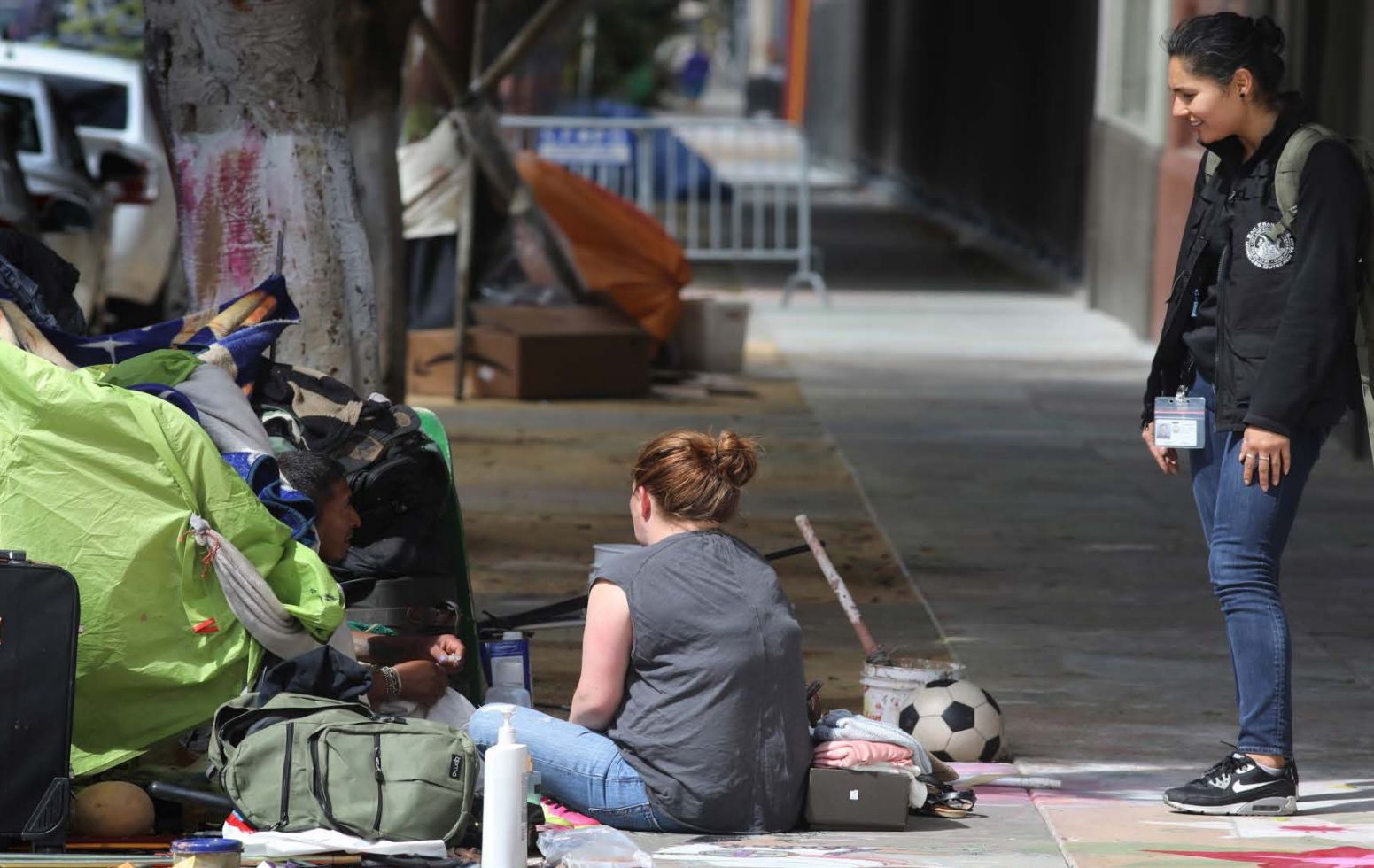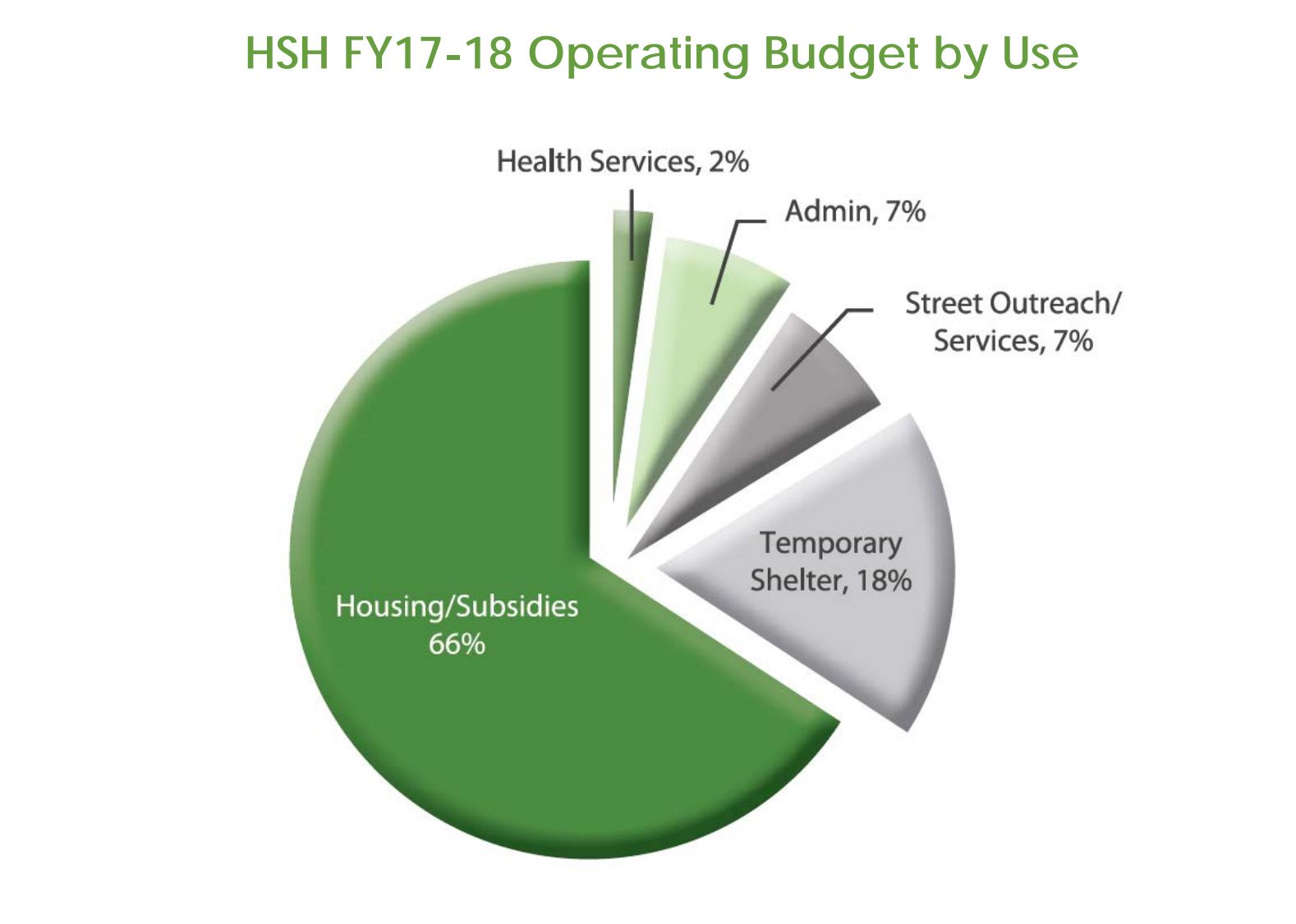Locals and tourists alike are quick to complain about San Francisco's very visible homeless problem. But apart from pat phrases like "it's gotten so much worse," very few people can quote any hard numbers about the homeless population, let alone understand the historical context of homelessness in California over the past 30 years.
And while local facts are important to keep straight, it's important to recognize that homelessness isn't — and never has been — a local problem that San Francisco is failing to solve. It's a national one that impacts most West Coast cities, and local solutions are almost always going to be band-aids that politicians use as political talking points.

In late January, volunteers canvassed the city as they do every other January — per rules set forth by the federal Department of Housing & Urban Development [HUD] — to take what's called a "Point-in-Time Count" of every homeless person, both sheltered and unsheltered. This happened in San Francisco as well as multiple others across the country. The process has drawn wide criticism for its likely inaccuracy — lots of homeless people crash on friends' couches or share beds in SROs, for instance, especially when it's cold outside, and volunteers can't talk to people or peek inside tents or other structures — but the methodology remains the same each year in order to maintain an apples-to-apples comparison. Canvassers count people in every shelter bed, and make visual assessments of those living on the streets, all in about four hours one evening. This year it happened on January 24, a record 800+ volunteers took part, and the Chronicle's Kevin Fagan tagged along with one volunteer crew that also included the city's "homeless czar," Jeff Kositsky.
"I’m not supposed to stop — the point of tonight is to count, not stop,” Kositsky told the Chronicle. “But it’s a human being there."
The results of the 2019 count won't be released until June, and many in Kositsky's department, and Mayor London Breed's office, are hoping the overall number has dropped in the last two years. The expectation is that the number of tent encampments will be much lower after the city's enforcement efforts, but this recent piece by KQED about the sharp rise in meth use in combination with heroin doesn't bode well.
In her State of the City address in January, Breed discussed the fact that the city's web of mental health services aren't currently working. She announced the creation of a new city position, Director of Mental Health Reform, saying she hopes the new role will help to coordinate the "ineffective" system we have now.
Now, some past numbers:
7,499: the total estimated homeless population as of the 2017 point-in-time census
7,539: the 2015 homeless count, marking just a 0.5% difference in two years
6,436: the 2013 count, which was virtually unchanged from the 2011 census
2,294: the number of people that Kositsky's Department of Homelessness and Supportive Housing believe are chronically homeless in SF in 2019
20,000: the cumulative number of homeless people Kositsky estimates pass through or reside on San Francisco's streets in a given year
1,363: the number of unaccompanied homeless youth (aged 12 to 24) counted in 2017
1,567: the number of unaccompanied homeless youth in 2015
48%: the percentage of homeless youth in SF who identified as LGBTQ in a 2016 survey
30%: the percentage of overall homeless who identified as LGBTQ in a 2017 survey
37%: the percentage of SF's homeless who say they have issues with drug or alcohol abuse
35%: the percentage who say they have emotional or psychiatric disorders [Source]
43: the number of mentally ill homeless people who were placed in conservatorship (involuntarily institutionalized) by the city in the last fiscal year (7/17-6/18)
32: the number who were placed in conservatorship the previous year [Source]
129,972: the estimated number of homeless in the state of California in 2018, per HUD
68.9%: the portion of California's overall homeless population who were unsheltered in 2018, which is the highest percentage of any state [Source]
5.7%: the estimated percentage of California's homeless residing in SF
38.4%: the estimated percentage of California's homeless residing in LA
2,105: the number of shelter beds in SF, both traditional and in Navigation Centers
9,000: the number of individuals and families being maintained in supportive housing by the city as of October 2017
26,000: the estimated number of individuals moved off of San Francisco's streets through city programs between 2004 and 2018
800: the number of homeless individuals who annually take advantage of SF's Homeward Bound program, giving them free bus or plane tickets home
$284.5 million: the current annual budget of the Department of Homelessness and Supportive Housing (HSH)
$164 million: the estimated portion of the department's budget used to maintain supportive housing for the formerly homeless that has already been built
$24.5 million: the amount budgeted to build new Navigation Centers and more permanent transitional housing in 2018-2019
$54 million: the estimated cost of ambulance, hospital, police and other emergency services associated with homelessness not included in the HSH budget
$44.5 million: the amount of federal HUD funds distributed to SF homeless programs in 2018 [Source]
$5.5 billion: the city's total annual spending budget
5%: the portion of the city's total budget devoted to homelessness

Related: The situation on the streets [SF Chronicle - June 2018]
Why San Francisco's Homeless Became A Problem In 1982 [SFist]
We've Been Talking About Homelessness Like It's New And Like It's The 'Worst Ever' For 30 Years [SFist]
2017 San Francisco 'Homeless Census' Reveals That Despite Numbers, Things Are Worse, Not Better [SFist]

